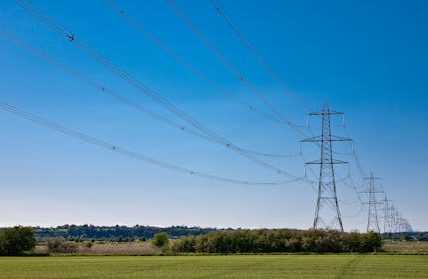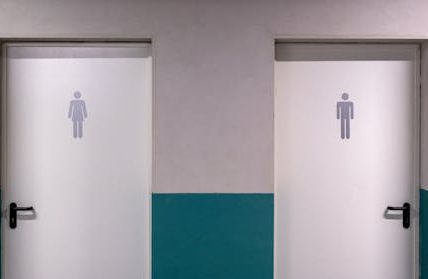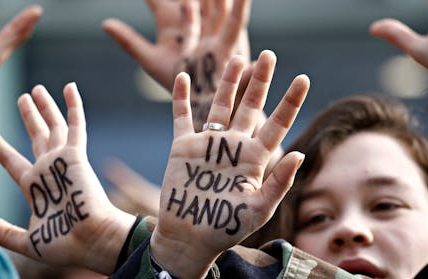Masked and armed agents are arresting people on US streets as aggressive enforcement ramps up
There are masked men, and some women, on the streets in American cities, sometimes travelling in unmarked cars, often carrying weapons and wearing military-style kit. They have the power to identify, arrest, detain non-citizens and deport undocumented immigrants. They also have the right to interrogate any individual who they believe is not a citizen over their right to remain in the US.
These are agents from US Immigration and Customs Enforcement Agency, known as Ice. This is a federal law enforcement agency, which falls under the control of the Department of Homeland Security (DHS), and is playing a significant and contentious role in the implementation of Donald Trump’s tough immigration policy.
On the campaign trail Trump promised “the largest domestic deportation operation in American history”. And he is giving Ice more power to deliver his plans.
Since Trump took office in January, Ice funding has been significantly increased. Trump’s “big beautiful bill”, passed by Congress in July 2025, gave Ice US$75 billion (£55 billion) of funding for the next four years, up from around US$8 billion a year.
This funding boost will allow the agency to recruit more agents as well as adding thousands more beds plus extensions to buildings to increase the capacity of detention centres. There is also new funding for advanced surveillance tools including AI-assisted facial recognition and mobile data collection. There’s another US$30 billion going to frontline operations, covering removing immigrants and transport to detention centres.
The president has committed to deporting everyone who is in the US illegally, that is estimated by the Wall Street Journal to be about 4% of the current US population. For the past five months, the numbers of people being picked up by Ice agents has been ticking up fast.
Average daily arrests were up 268% to about 1,000 a day in June 2025, compared with the same month a year earlier. This was also a 42% rise on May 2025, according to data analysis from the Guardian and the Deportation Data Project. However, this is still considerably short of the 3,000 a day ordered by secretary of homeland security Kristi Noem and White House deputy chief of staff Stephen Miller.
Ice’s tactics have already attracted significant criticism. Right-leaning broadcaster Fox News has reported on how masked agents are not showing ID or naming their agency when picking up people in raids. Other reporting has highlighted allegations that American citizens are also sometimes being swept up in the raids.
The agency, currently led by acting director Todd M. Lyons, has three main divisions: the Enforcement and Removal Operations division, which identifies and deports undocumented immigrants as well as manages detention centres. The Homeland Security Investigations, which investigates criminal activities with an international or border nexus such as human trafficking, narcotics, and weapons smuggling. The Office of the Principal Legal Advisor provides legal advice to Ice and prosecutes immigration cases in court.
Lyons claimed that mask wearing was necessary because of Ice agents being “doxed” – when a person’s personal information such as names and home addresses are revealed online without their permission. Assaults on Ice agents have risen, he claimed. DHS data suggested that there were 79 assaults on Ice agents from January to June 2025, compared to ten in the same period in 2024.
Democratic House minority leader Hakeem Jeffries compared mask wearing by Ice agents to secret police forces in authoritarian regimes. “We’re not behind the Iron Curtain. This is not the 1930s.”
Read more:
ICE has broad power to detain and arrest noncitizens – but is still bound by constitutional limits
The Ice agency was established in 2003 by the George W. Bush administration, partly as a result of the 9/11 terrorist attacks, and was part of a broader reorganisation of federal agencies under the then newly created DHS. It incorporated parts of the former Immigration and Naturalization Service (INS) and some elements of the US Customs Service.
According to the agency’s website, Ice’s core mission is “to protect America through criminal investigations and enforcing immigration laws to preserve national security and public safety”.
News coverage of Ice agents wearing masks and not identifying themselves.
What’s changed?
At the start of the administration in January, the White House gave Ice the authority to hasten the deportation of immigrants that had entered the country with government authorisation during the previous administration. This “expedited removal” authority allowed Ice to deport individuals without requiring an appearance before an immigration judge.
As arrests have grown in the past months, Lyons told CBS News that Ice would detain any undocumented immigrant, even if they did not have a criminal record.
And the Trump administration has also allowed Ice agents to make arrests at immigration courts, which had previously been off limits. This restriction was introduced by the Biden administration in 2021 to ensure witnesses, victims of crimes and defendants would still appear in court without fear of arrest for immigration violations, unless the target was a national security threat.
Protests over Ice raids have spread across California.
However, Lyons rescinded those restrictions in May, part of a broader shift towards aggressive enforcement.
Much of the time, Ice has targeted illegal immigrants. But the agency has also arrested and detained some individuals who were residents (green card holders) or tourists – and, in some cases, citizens.
In recent weeks, according to the Washington Post, Ice has been ordered to increase the number of immigrants shackled with GPS-enabled ankle monitors. This would significantly increase the number of immigrants that are under surveillance. Ankle monitors also restrict where people can travel.
Sparking protests
There have been numerous public protests about Ice raids, most notably in California. This peaked on June 6 after Ice had conducted numerous raids in Los Angeles, resulting in clashes between agents and protesters. This led to the White House sending around 2,000 National Guard troops and 700 Marines to Los Angeles, despite opposition from California governor Gavin Newsom.
Part of the friction between the Trump administation and the state is that Los Angeles and San Francisco have adopted local policies to limit cooperation with federal immigration authorities including Ice. California has sanctuary laws, such as SB 54, that prohibit local police and sheriffs from assisting Ice with civil immigration enforcement.
However, Trump shows every sign of pushing harder and faster to crack down on illegal immigrants, and Ice agents are clearly at the forefront of how he aims to do it.
Dafydd Townley does not work for, consult, own shares in or receive funding from any company or organisation that would benefit from this article, and has disclosed no relevant affiliations beyond their academic appointment.


